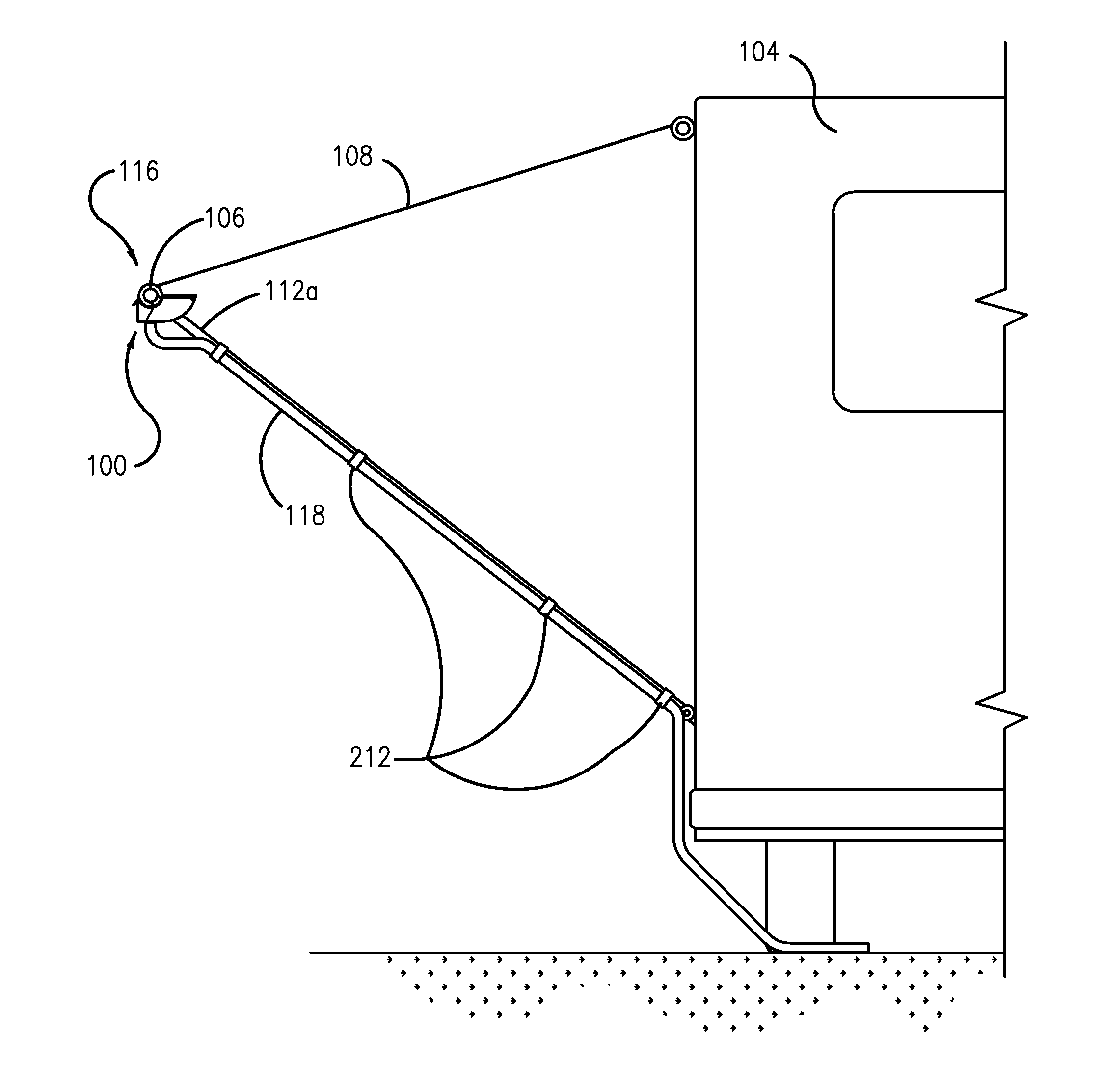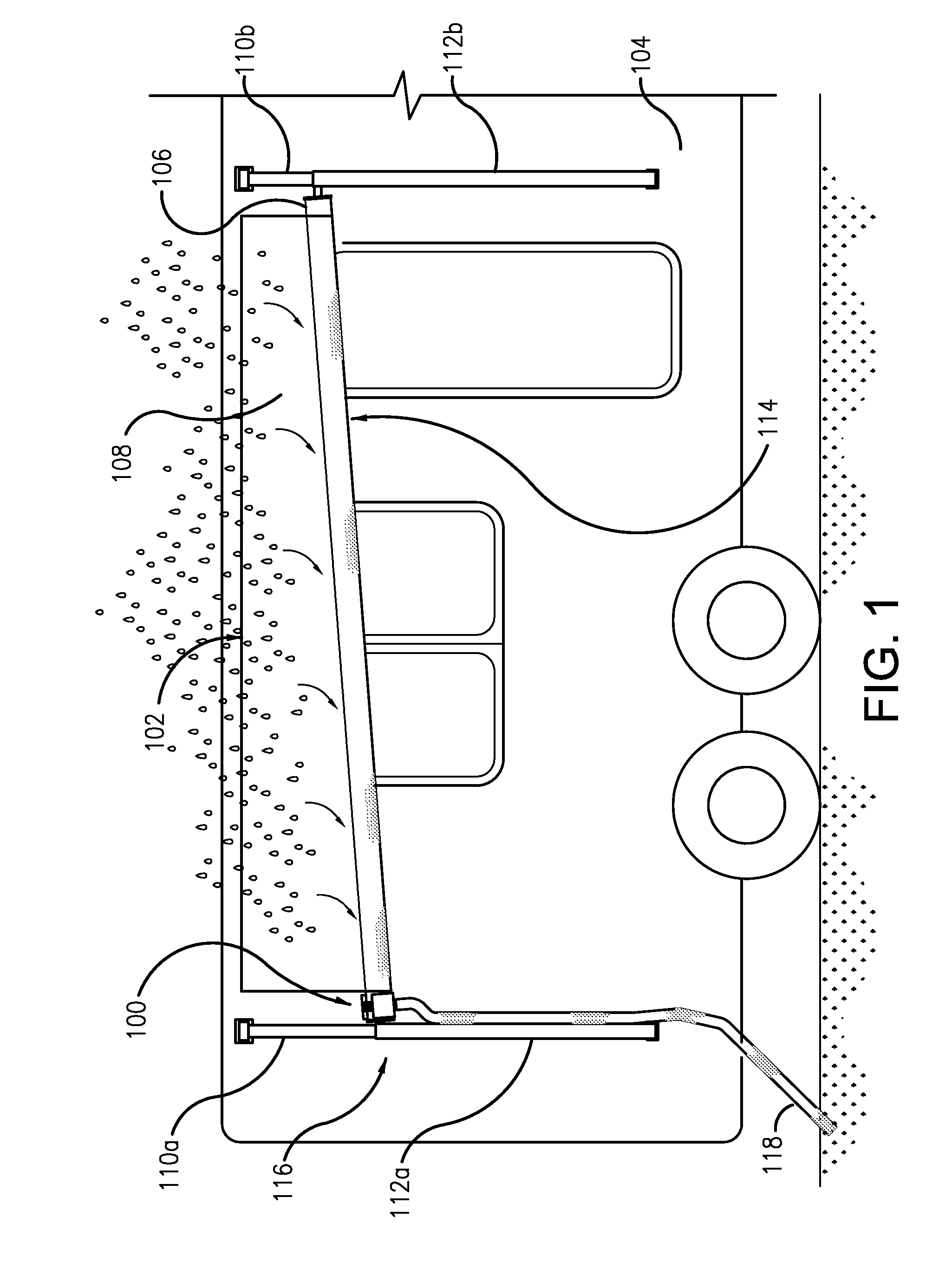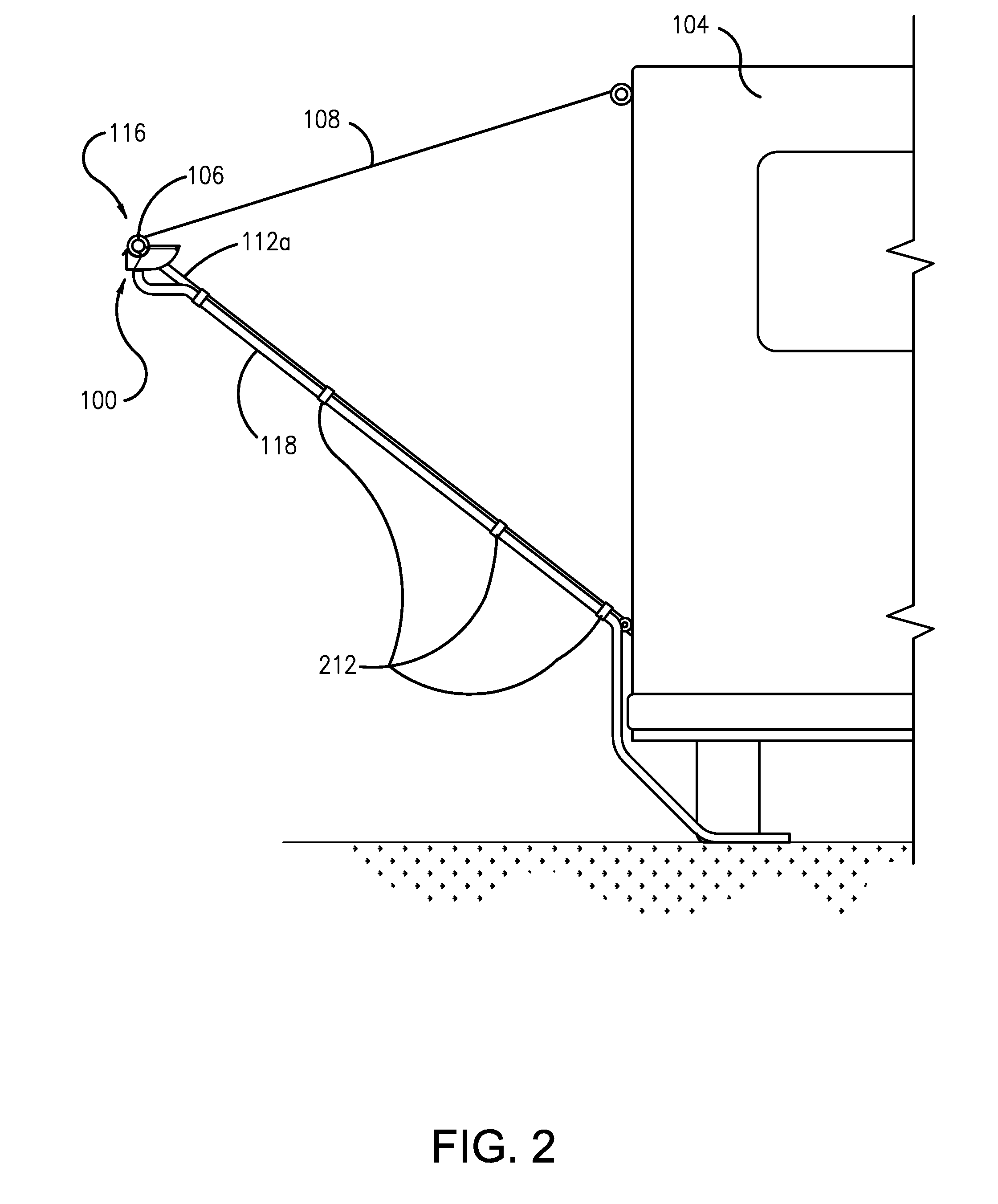Rain catch for collecting and diverting rainwater from a retractable awning
a retractable awning and rainwater technology, applied in the field of rainwater capture and diversion, can solve the problems of mud splatter, affecting the easy retraction and storage of rainwater, and the practicality of the gutter system, so as to facilitate the diversion of rainwater, facilitate the installation, and facilitate the effect of collecting water
- Summary
- Abstract
- Description
- Claims
- Application Information
AI Technical Summary
Benefits of technology
Problems solved by technology
Method used
Image
Examples
Embodiment Construction
[0025]FIG. 1 is a view from the front of a retractable awning 102 that is attached to and deployed from a recreational vehicle (RV) or camper 104. The retractable awning 102 is attached to RV / camper 104 in a manner that is well known in the art. The retractable awning 102 has a roller tube 106 from which an awning canopy 108 is unrolled when being deployed, or onto which it is rolled when being retracted. The roller tube 106 also acts as an awning beam providing structural support to the leading edge 114 of the awning canopy 108. The awning canopy 108 is supported by bracing members 110a and 110b, which run parallel with the outside edges of the awning canopy 108 to provide rigidity to the canopy 108 when it is fully extended. The retractable awning 102 also includes support members 112a and 112b that support the leading edge 114 and awning beam 106 of the retractable awning 102.
[0026]As illustrated in FIG. 1, one of the support members 112a is deployed such that it is shorter than ...
PUM
 Login to View More
Login to View More Abstract
Description
Claims
Application Information
 Login to View More
Login to View More - R&D
- Intellectual Property
- Life Sciences
- Materials
- Tech Scout
- Unparalleled Data Quality
- Higher Quality Content
- 60% Fewer Hallucinations
Browse by: Latest US Patents, China's latest patents, Technical Efficacy Thesaurus, Application Domain, Technology Topic, Popular Technical Reports.
© 2025 PatSnap. All rights reserved.Legal|Privacy policy|Modern Slavery Act Transparency Statement|Sitemap|About US| Contact US: help@patsnap.com



